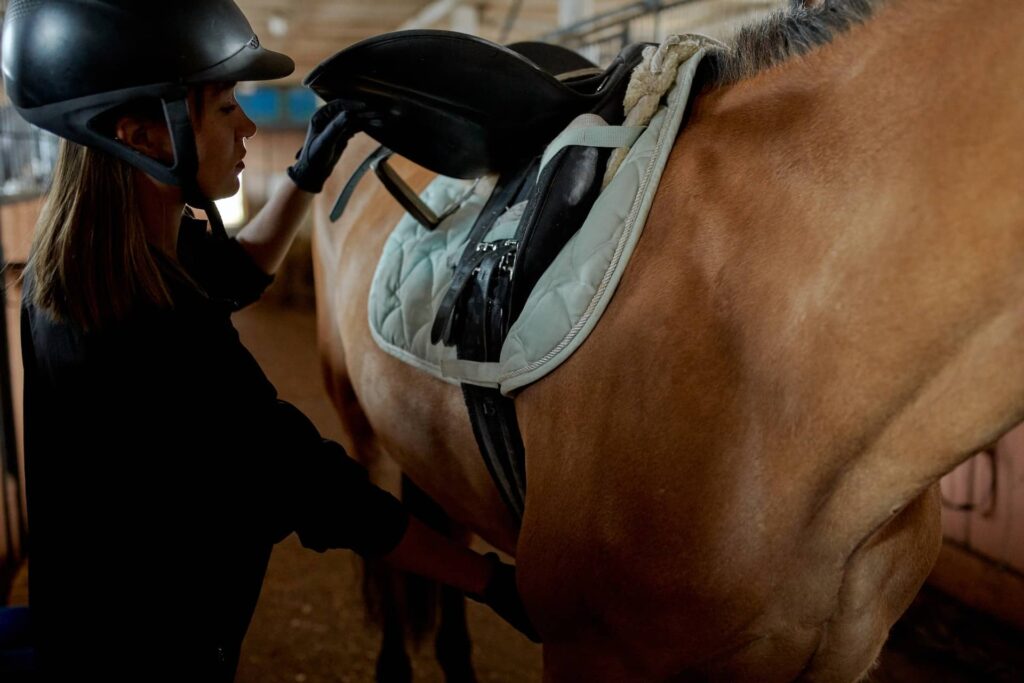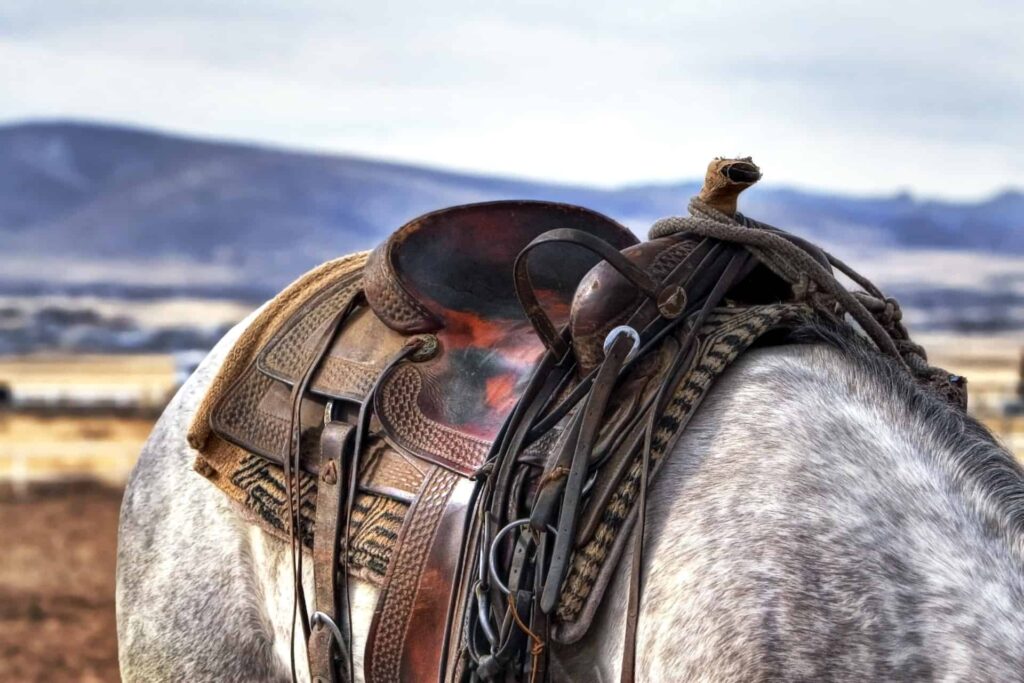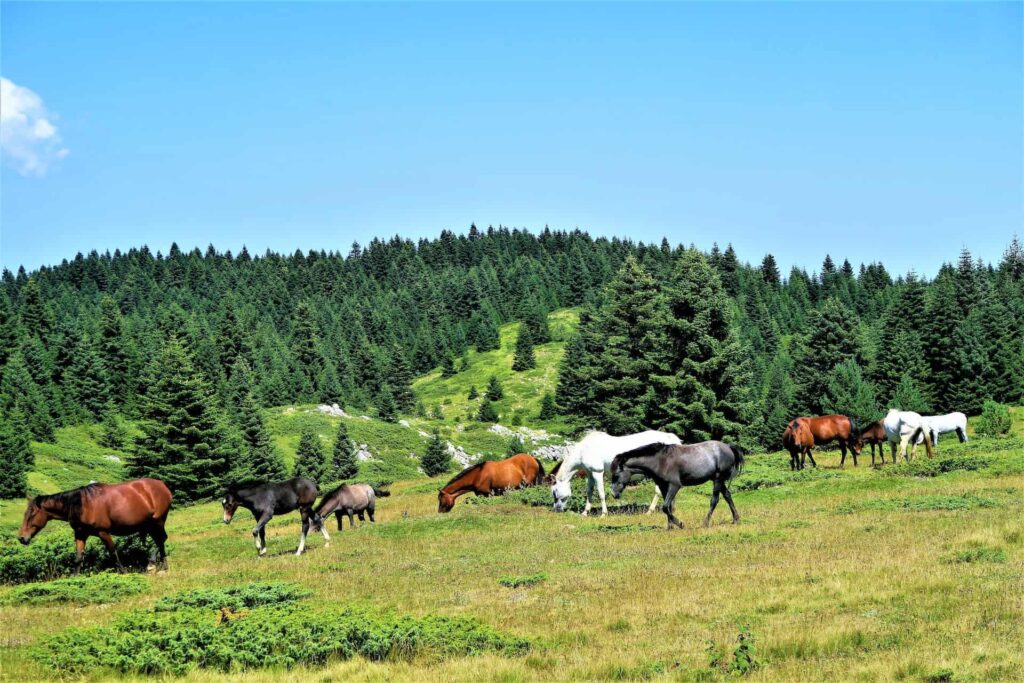Horse riding is a rewarding and exhilarating sport that can be enjoyed by people of all ages and skill levels. Whether you’re a beginner starting your journey into the exciting world of equestrian sports or an experienced rider looking for ways to improve and refine, knowing the key elements and the proper techniques can positively impact your riding experience and help you become a better, more confident rider. Here are some great horse riding tips to get you started.
Safety is key when it comes to horse riding, so it’s necessary to equip yourself with the right knowledge, equipment, and horses that match your riding level. Developing a strong bond and understanding of your horse will enable you to achieve a more successful and enjoyable riding session.
Key Takeaways
- Understand safety measures and equip yourself with proper knowledge and gear
- Develop a strong bond with your horse for a better and more enjoyable riding experience
- Continuously refine your riding techniques, regardless of your skill level
Preparing for Horse Riding
Choosing the Right Equipment
When preparing for horse riding, it’s important to choose the right equipment to ensure a comfortable and safe experience. Start by selecting a saddle that fits both you and your horse. The stirrups should be adjustable, allowing your legs to hang comfortably without having to stretch for the correct position.
A high-quality riding helmet is critical for safety. Ensure that the riding helmet is approved for horseback riding and fits snugly around your head. Riding boots provide proper foot positioning in the stirrups and provide ankle support, so choose boots with a low heel to help grip the stirrup safely.
Safety Precautions
Before starting your ride, ensure you follow basic safety precautions to minimize the risk of accidents. Check your equipment and adjust the stirrup length to ensure that it is suitable for you. Tack and equipment should be well-maintained, and always wear a riding helmet. Consider wearing a safety vest or body protector for added protection.
Familiarize yourself with any safety precautions when riding in winter, as the weather conditions can vary greatly. Dress in layers to stay warm and consider using hand and foot warmers for added comfort. Be aware of slippery or icy surfaces while riding and adjust your speed accordingly.
Preparing Your Body for Riding
Horse riding requires a good level of physical fitness and strength. To prepare your body for riding, focus on building core strength and flexibility to maintain balance and stability on the horse. Circuit training workouts, yoga, and Pilates are excellent options for strengthening your riding muscles.
Remember to warm up before each riding session to prevent injuries. Stretching and dynamic warm-ups can help increase flexibility, reducing the risk of muscle strains. Finally, practice good posture and correct body alignment while riding to prevent repetitive stress injuries and improve your horsemanship.
The Basics of Horse Riding
Understanding Horse Riding
Horse riding is a rewarding activity for beginners and experienced riders alike. It requires balance, coordination, and trust between the rider and the horse. For beginner riders, start by understaning the basics of horse riding before stepping into the saddle.
Mounting and Dismounting
Mounting and dismounting a horse are fundamental skills that every beginner rider must learn. To mount a horse, approach the left side and ensure that all equipment is secure. Hold the reins and the mane, then place your left foot in the stirrup and swing your right leg over the horse. To dismount, follow the process in reverse.
Controlling the Horse
Controlling the horse is the next important tecnique for a beginner rider. Learn how to hold the reins properly, with a relaxed grip, allowing the horse to feel calm and responsive. Direct the horse by gently squeezing with your legs and using subtle movements of the reins.
- Starting and stopping: To make the horse move forward, gently squeeze your legs against its sides and release the reins slightly. To stop, sit tall, apply light pressure on the reins, and relax your legs.
- Turning: To turn the horse, gently pull the rein in the direction you want the horse to move, and apply pressure with your opposite leg.
- Speed control: Increase and decrease speed by managing leg pressure and rein tension. As a beginner rider, practice maintaining consistent speed and controlling transitions.
Proper Posture
Maintaining proper posture is critical for controlling the horse and ensuring a nice ride.
- Upper body: Keep your upper body tall and straight, with relaxed shoulders and a neutral spine.
- Arms and hands: Hold the reins at an even length, with elbows bent and relaxed. This allows for better communication between the rider and the horse.
- Legs and feet: Place your feet securely in the stirrups, with your heels down and toes pointing straight. Maintain contact with the horse by keeping your inner thighs and calves lightly pressed against its sides. This will improve balance and communication with the horse.
By learning these fundamental skills and practicing regularly, a beginner horse rider can confidently enjoy the rewarding experience of horse riding.

Exercises for Riders
Riding is a horse sport that requires a strong connection between rider and horse. To improve your riding skills, work on specific exercises that target your balance and strength. In this section, we will discuss a range of exercises that focus on balance and strength, which will greatly benefit your riding performance.
Exercises for Balance
Balance aids in maintaining stability and control while riding. Working on balance exercises can improve your posture, coordination, and riding performance. Some effective balance exercises include:
- Leg lifts: While in the saddle, try lifting one leg at a time and holding it for a few seconds. This helps to engage your core muscles and enhances your balance.
- One-stirrup work: Remove one stirrup and practice riding with only the other foot in the stirrup. This helps to strengthen your leg and core muscles, as well as improve balance.
- Riding without stirrups: Riding without stirrups can help develop a deeper, more secure seat, as it forces you to engage your core muscles and rely on your balance rather than your stirrups.
Exercises for Strength
Building strength improves your connection with the horse, as well as preventing injuries. Incorporating strength exercises that target key muscle groups can help enhance your riding abilities. Consider incorporating these exercises into your routine:
- Core strengthening: Exercises like plank variations, dead bugs, and Russian twists can help engage and strengthen your core muscles. A strong core provides stability and control while riding.
- Leg strengthening: Leg muscles play a vital role in supporting the rider’s weight and maintaining stability. Exercises like squats, lunges, and leg presses can help target and strengthen these muscles.
- Full-body workouts: Incorporating full-body exercises, such as yoga or Pilates, can help engage multiple muscle groups, improve balance, and enhance strength and flexibility.
By focusing on improving your balance and strength, you can greatly enhance your riding abilities and create a more harmonious relationship with your horse. Remember to tailor your exercises to your specific needs, and consult with a professional instructor or trainer for guidance.
Improving Your Riding Techniques
Perfecting Your Trot
The trot is a fundamental gait in horse riding that requires balance and coordination. To perfect your trot, focus on maintaining a steady rhythm and keeping your seat firmly in the saddle. Remember to relax your grip on the reins and allow your arms to move with the horse’s motion. Adjusting your stirrups to the correct length can also improve your balance. Experiment with both English riding and Western-style riding to determine which style works best for you and your horse.
Master the Canter
The canter is a more advanced gait that requires precise timing and communication between the rider and the horse. To master the canter, keep your weight balanced through the stirrups while maintaining a light grip on the reins. Be mindful of the horse’s head, and give gentle cues to encourage transitions between the walk, trot, and canter. In both English and Western-style riding, it’s important to stay in tune with the horse’s movements and adjust your position as needed.
Honing Your Jumping Skills
Jumping is an exciting aspect of horse riding that requires both horse and rider to work together. To hone your horse jumping skills, ensure that you have a solid foundation in trot and canter before attempting jumps. When approaching a jump, maintain a steady pace and look ahead to anticipate the next obstacle. As you take off, keep your weight centered over the stirrups, and avoid pulling on the reins. Developing jumping skills in both English riding and Western-style riding can help build your versatility as a rider.
Advanced Horse Riding Tips
Understanding Your Horse
One of the more important aspects of advanced horseback riding is understanding your horse’s behavior and body language. Horses are sensitive animals, and developing a strong bond with your horse will help you to better communicate with them and improve your riding skills.
To establish a connection, spend time grooming and handling your horse before and after riding sessions. This interaction will help build trust and increase their responsiveness to your cues. Observe your horse’s reactions, movements, and expressions during riding sessions and adjust your approach accordingly.
When riding in the arena, develop your riding skills with focused exercises that will help improve both your and your horse’s abilities. Work on transitions between gaits, balancing, and maintaining a consistent pace. Regular riding lessons with a professional horse trainer can be invaluable in this regard, as they can provide personalized advice and tailored exercises.
Here are some advanced horse riding tips to enhance your performance:
- Focus on your position: Good posture will help maintain your balance and give effective cues to your horse. Sit up straight, keep your heels down, and maintain a soft yet firm grip on the reins.
- Be mindful of your horse’s balance: When riding, ensure that your horse carries its own weight evenly on all four legs. Support your horse by using your legs to help balance its body during turns and transitions.
- Develop and maintain rhythm: Riding with a consistent and clear rhythm will make advanced maneuvers and transitions smoother. Work on maintaining even strides at each gait while being conscious of your horse’s breathing pattern.
- Master the art of half-halts: Half-halts are a fundamental communication technique in advanced horseback riding. It helps to balance and refocus your horse through shifts in your seat, leg, and rein aids. Use half-halts effectively to prepare for transitions, maintain rhythm, and regulate your horse’s pace.
- Learn how to execute advanced movements: Once you have mastered the basics, try your hand at more complex riding skills, such as lateral movements, flying changes, and collection. Seek guidance from a qualified horse trainer to help you break down and practice advanced techniques.
Advancing your riding skills requires patience, consistency, and dedication. By applying these tips and seeking guidance from experienced horse trainers, you will continue to improve as a horse rider, ensuring a safer and more enjoyable riding experience for you and your horse.

Post-Riding Tips
After a satisfying horseback riding session, follow these post horse riding tips to ensure the well-being of both the horse and rider. Not only do these help maintain your riding equipment, but they also support your horse.
Begin by checking the saddle pad for any debris or sweat that can irritate your horse’s back. Gently remove any dirt or hair entangled in the pad fibers, and air it out before storing it away to keep the material in good condition.
Achieving balance during a horseback riding session is aids in the rider’s safety and the horse’s comfort. Reflecting on your riding experience and identifying areas for improvement or adjustments can help you maintain balance in future rides.
Regularly inspect your girth after riding to check for wear and tear. Wipe down sweat and dirt with a damp cloth to prevent skin irritation on your horse and prolong the life of the girth. Always tighten it appropriately during rides to ensure your saddle doesn’t slip.
Consider cleaning the bridle after each ride, as sweat and saliva can cause the leather to deteriorate. Focus on the bit and cheek pieces, as these tend to accumulate dirt. Use saddle soap or a leather cleaner and finish with a leather conditioner to keep it supple.
Don’t forget to protect your feet when handling horses. Invest in quality riding boots that provide ankle support and protect your feet from potential injuries. This precaution not only keeps you safe but also ensures a comfortable riding experience.
Horse Riding Tips FAQ
How can beginners improve their trotting skills?
Beginners can improve their trotting skills by practicing regularly and focusing on maintaining a balanced and secure position in the saddle. Work to develop a strong core and establish a steady rhythm with the horse’s movements.
What are common mistakes to avoid for beginner riders?
Some common mistakes for beginner riders include:
- Not maintaining proper posture
- Gripping the reins too tight
- Stiffening rather than relaxing the body
- Failing to communicate clearly with the horse
What techniques should be practiced for advanced horse riders?
Advanced horse riders should focus on refining their skills in specific disciplines, such as dressage, show jumping, or cross-country riding. They should also continue to work on improving communication, balance, and precision with their horse.
How does one maintain stability and prevent bouncing while riding?
Maintaining stability while riding involves:
- Developing correct posture
- Engaging your core muscles
- Relying on your legs and seat for balance, rather than hands
- Moving in rhythm with the horse’s movements
What safety precautions should be taken when riding horses?
Important safety precautions when riding horses include:
- Wearing a certified, well-fitting helmet
- Riding in proper attire: boots, gloves, and appropriate clothing
- Ensuring the tack fits the horse correctly
- Staying aware of your surroundings and potential hazards
- Learning to react calmly to unexpected situations
What is the correct posture when galloping or riding fast?
When galloping or riding fast, the correct posture involves:
- Maintaining a slightly forward position in the saddle
- Keeping a firm, but not rigid, contact with the horse through your legs and seat
- Keeping the reins slightly loose to allow for freedom of movement
- Absorbing the motion through your hips and knees, without gripping too tightly with your legs
Sources
- The Complete Idiot’s Guide to Horseback Riding
- Storey’s Guide to Training Horses, 3rd Edition: Ground Work, Driving, Riding
- Horseback Riding For Dummies
Last Updated on November 9, 2023 by Nate Dewsbury



